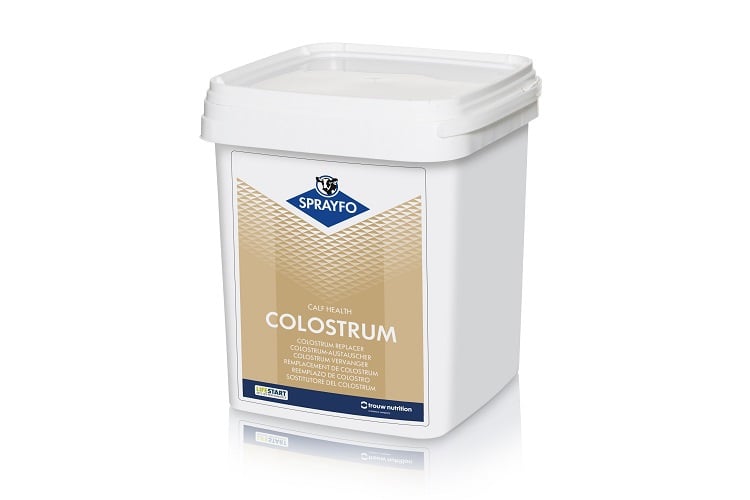Other health challenges
Johne’s disease is a chronic wasting disease of cattle, caused by Mycobacterium avium, subspecies paratuberculosis (MAP). If Johne’s disease is present on a dairy farm, it potentially creates the following problems:
- The incidence of Johne’s disease once present on a dairy farm can be relatively high and as a result, the majority of calves being reared will not reach their full production potential
- Crohne’s disease in humans is sometimes associated with infection with Mycobacterium paratuberculosis, as a result, processors and supermarkets force farmers to eradicate Johne’s disease from their farm.
Dairy calves are usually infected with mycobacterium paratuberculosis during the first weeks of their lives through direct or indirect contact with faeces from infected cows or via milk from cows with Johne’s disease.
Route of infection and clinical signs of Johne’s disease
Clinical signs of Johne’s disease usually appear from 3-5 years of age onward. Cow suffering from Johne’s disease have chronic diarrhoea, weight loss, low production and poor fertility.
Animals infected with mycobacterium paratuberculosis can be identified by testing blood, milk or faeces. Neither of those tests is very reliable during the early stages of disease. For every cow with clinical signs there are 15-20 apparently healthy cows that already shed Johne’s disease bacteria.
How is Johne’s disease introduced on my farm?
Johne’s disease can be introduced on your farm by adding a cow with Johne’s disease to the herd (to avoid this, keep the farm closed and never introduce an animal from another farm) or by transfer of faeces infected with mycobacterium paratuberculosis from an infected farm. Frequent visitors of multiple farms (feed advisors, inseminators, vets etc.) can potentially carry infected faeces from one farm to another. Strict hygiene and biosecurity are the answer to this threat.
Once the infection is introduced on a farm, it may take several years before the first infected animal shows clinical signs. By this time, the infection may have spread to other animals. Therefore, even in the absence of clinical cases of Johne’s disease, biosecurity measures to avoid transfer of bacteria between animals on the farm make sense!

Everything you should know about Johne's disease
Eradicating Johne’s disease or keeping Johne's disease under control can be a huge challenge. Our Technical bulletin "Johne's disease explained" can help you understand the background of the disease and the rationale behind certain preventative measures. Hygiene around calving to reduce transfer of Mycobacterium avium, subspecies paratuberculosis (MAP) is an important part of a Johne's disease control programme. The white paper with the optimal calving protocol for dairy cows will help you to optimise your calving process.
Register once and download all you need
You can access all of our documentation such as the science behind Sprayfo and LifeStart research documents, Sprayfo technical bulletins about various calf diseases and technical product data sheets or feeding schedules.
Biosecurity measures to avoid spread of Johne’s disease on farm
 Young dairy calves should not be in contact with contaminated faeces or milk from cows infected with Johne's disease, therefore:
Young dairy calves should not be in contact with contaminated faeces or milk from cows infected with Johne's disease, therefore:
- Test cows suspected of suffering from Johne’s disease and if positive, cull them
- Do not raise dairy calves from known infected dams as breeding replacements
- Ensure strict hygiene around calving
 Seperate the young calves from the cows
Seperate the young calves from the cows
- Separate calves from cows immediately after birth and house them as remotely as possible from the cows
- Work with the calves first and move to the cows afterwards, not the other way around
- Always disinfect your boots before you move into the young calf shed
 Vaccination against Johne's disease
Vaccination against Johne's disease
- A vaccine against Johne’s disease exists, but does not offer 100% protection. Secondly, animals vaccinated against Johne's disease will test positive, so it will make testing and identification of infected animals more difficult. Vaccination should therefore only be considered in heavily infected farms as a measure to quickly reduce the incidence of Johne's disease as a first step of a Johne's disease control program.
 Advice for colostrum and milk feeding
Advice for colostrum and milk feeding
- Ensure optimal hygiene and disinfection of teats when harvesting colostrum
- Consider pasteurization of cow colostrum before feeding
- Feed colostrum for the first 24 hours and switch to calf milk replacer afterwards, calf milk replacer can be stored and prepared in the calf shed, thus reducing the amount of indirect contact between cows and young calves
- Never feed waste milk
 Johne’s disease is a complex problem. Therefore:
Johne’s disease is a complex problem. Therefore:
- Always involve your vet from the beginning
- Realise that a “quick fix” is not an option and cutting corners isn’t either
- Ensure that once you have a Johne's disease eradication programme, all members of the on-farm team buy in to it






